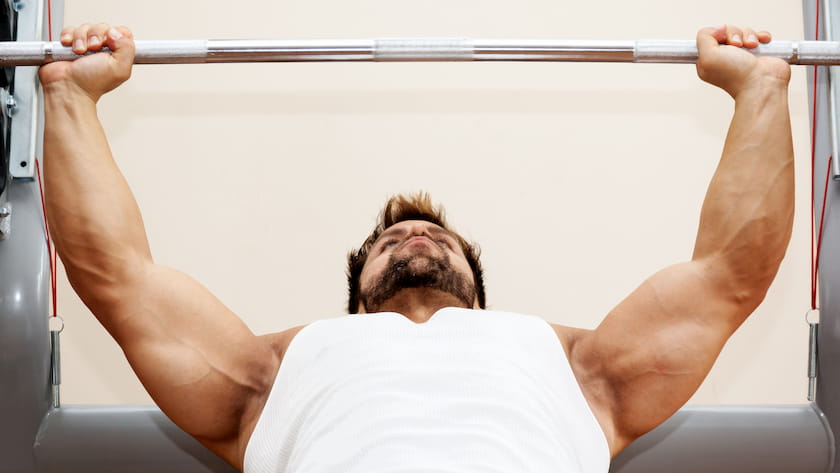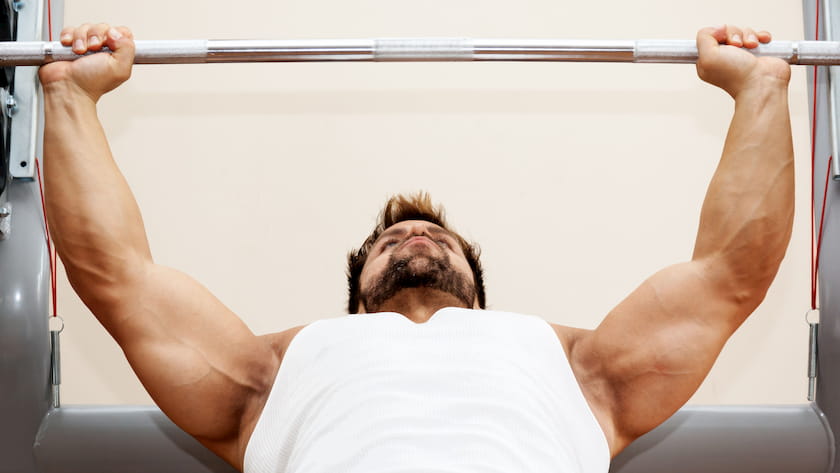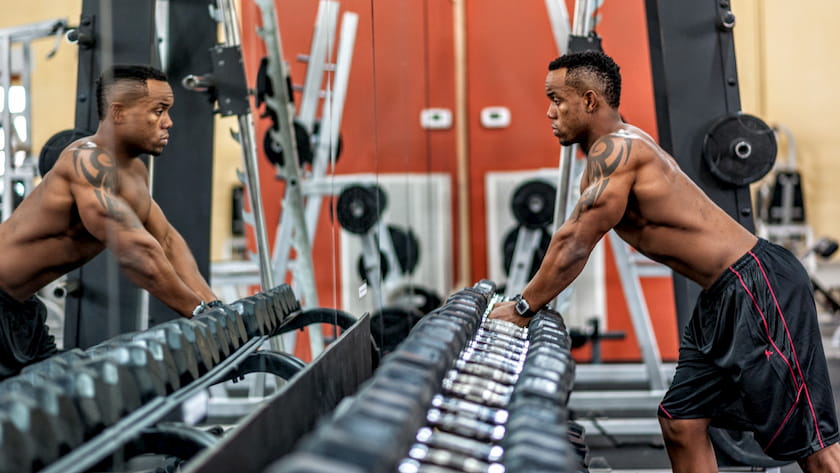Since we no longer fight lions and duel to the death in arenas, the average guy needed a new way to prove his masculinity: the bench press. Gyms across the nation are packed with men trying to boost their bench press with the intention to impress (or just make gains).
So how is your bench? Are you still pushing up the same weight as you were a few weeks ago? A few months ago?
If bigger plate numbers are what you are after, then you will need to alter not just how you lift, but how you think about this classic exercise.
Why the Numbers Matter
Lifting for size is not the same as lifting for strength. One may bring about the other when you first introduce yourself to weight lifting, but eventually, you will want to follow a specific set of acute variables. If your goal is to increase your bench press numbers, then you'll want to train for strength. When your goal is to train for strength, the focus of every lift will be neural motor recruitment. Don’t let the fancy words scare you off. It’s just another way of saying that you want to incorporate as many muscle groups per exercise as you can. You’re not just recruiting more muscles, you are doing it efficiently so that you are increasing your full body strength as a whole. In turn, this will allow you to move more weight. This isn’t a new concept by any means. “Milner-Brown, Stein, and Lee (1975) were the first to demonstrate that strength training results directly in measurable changes in the way motor units are recruited during effort." Strength focused training has been shown for decades to improve neural motor recruitment, which means there is tested science behind the claims of gains.Variables of Lifting for Strength
You know why you want to start lifting for strength, now let’s review the how. Using perfect form should be a given with any and every exercise. It ensures proper range of motion, correct neural motor recruitment, and prevents injury. As you maintain perfect form, your goal will be to move a large amount of weight as quickly as you can safely control. According to the National Academy of Sports Medicine, here is the breakdown of variables:1. Sets of 4 to 6
For each exercise, you want to perform 4 to 6 sets. Keep in mind that this does not include your warm-up sets. Before jumping into any workout, be sure to complete 2 to 3 warm-up sets with half of the weight you are accustomed to.2. Repetitions of 1 to 5
This may seem counter-intuitive to everything that you have been doing in the gym but remember that you are training for strength, not size. As the next point will demonstrate, pushing out 1 to 5 perfect presses is plenty.3. Weight of 85% to 100% of your 1RM
The load for the lift, or the weight you use, is going to be 85% to 100% of your one-repetition maximum. Take the maximum amount of weight that you can safely press once. You are going to use 85% to 100% of that weight during each of your 4 to 6 sets.4. Rest periods of 1 to 3 minutes
Unlike training for hypertrophy, which utilizes the 60-second break, strength training allows for an extended break of 3 to 5 minutes. Why the increased rest period? When given 3-5 minutes to rest, your body can fully restore its energy stores; the main one being ATP (adenosine triphosphate). With your energy restored, your body will be able to push out another 5 repetitions of that heavy weight.Explosive Movements
Just because you want to increase your bench press doesn’t mean you will be limiting yourself to only one exercise. Maximal strength training still holds many standard bodybuilding rules such as variety. Explosive exercises like the clap push-up and medicine ball throw have been shown to play a significant part in getting those plate numbers to climb. The trick; however, is to utilize these exercises with explosive movements. Need the proof? “In a 2-month study, researchers at the College of New Jersey had men do explosive chest exercises prior to a heavy bench-press workout 1 or 2 days a week. The result: The men benched 5 percent more weight than those who skipped the power exercises.” (“Elevate Your Gains” N.D. Para. 1) As mentioned above, explosive movements are carried out as fast as you possibly can while maintaining perfect form and control. If you think you should be bouncing the barbell off of your chest during a bench press, think again.Compound Movements
You cannot focus solely on training your chest to increase your bench press. Think about your chest as the main star in a movie. No one wants to see one guy run around on camera for an hour and a half. You need supporting actors to make things interesting. In this case, the supporting actors are the rest of your muscle groups. All of whom need attention. The stronger the supporting muscles, the stronger the performance of the leading star. The key to working out all of your muscles while striving for total neural motor recruitment is to perform compound movements. Compound movements are the exercises that use several muscle groups at once, such as the squat, deadlift, and clean and press. These are the classics of bodybuilding and powerlifting, and there is a reason they have been around for so long: they work.Sample Bench Press Workout
Warm-up
- 10-15 minutes of cardio followed by stretching and SMR (foam rolling)
Workout
- Barbell Flat Bench Press: 2-3 warm-up sets x 8-12 repetitions, then 4-6 sets x 1-5 reps
- Superset 1: Explosive Push-ups: 4-6 x 1-5
- Superset 2: Chest Fly: 4-6 x 1-5
- Superset 1: Incline Dumbbell Bench Press: 4-6 x 1-5
- Superset 2: Front Medicine Ball Throw: 4-6 x 1-5
REFERENCES
1.) “Elevate Your Gains” menshealth.com. N.D. Web.
2.) Clark, M.A., Lucett, S.C., Sutton, B.G. (2012). NASM Essentials of Personal Fitness Training. Baltimore, MD: Lippincott Williams & Wilkins.
3.) Gardiner, Phillip. “Strength training results in measurable changes in motor unit recruitment” humankinetics.com N.D. Web
Popular Topic Index: Natural Bodybuilding Guide Building Mass Fast Bulking Guide Pre-Workout Supplements Guide Post-Workout Supplements Guide Best Arm Workouts Guide How to Boost Testosterone Naturally



Leave a comment
All comments are moderated before being published.
This site is protected by hCaptcha and the hCaptcha Privacy Policy and Terms of Service apply.